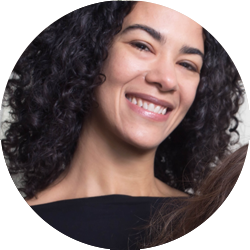When your anchors are missing, you feel it. Your ship floats this way and that. There’s a heightened level of turbulence — whining, clinging, hitting — all the signs that kids feel overwhelmed. You get this feeling that your days need more structure.
If you’re getting that feeling, too, this post is for you.
There are a couple ways to think of structure: rhythms and routines.
Having a rhythm to your day includes, at its most basic, set times for meals and sleep. (Or, at least, attempts at meals and attempts at sleep.)
Routines are patterns you always follow for specific activities. Your bedtime routine, for example, might always start with jammies followed by two stories by lamplight and a lullaby after lights out.
Well, that’s where I kind of stopped. I didn’t grow up with routines, and just doing those things felt monumental.
I pondered adding rhythm to the day: set blocks of time for being outside, art projects, cooking, and chores. That doesn’t mean doing exactly the same things every day. Being outside might mean a walk in the park nearby, taking a bucket to the beach, or a bike ride with friends. Art projects might involve modeling clay, watercolors, drawing, playing with blocks, stringing beads, or sewing buttons.
Sounds nice, but it’s not gonna happen. What I can do is control the ebbs and flows. A busy afternoon means nothing but down time gets planned for the evening. And some extra togetherness in the morning, like snuggling up to read a book.
I’m thinking about adding rhythm to the week, too: the farmers market on Thursday evenings, or a hike on Saturday mornings. Sunday is already bagel day in our house. Of course, the seasons are the rhythm of the year.
These serve as little anchors for our kids and for ourselves. Ahhh, kids think: I know what’s coming next.
Within our rhythms, we can add routines to the tough transitions and other flashpoints in our day.
In my house, we’re working on a daddy-daughter story time as soon as my husband comes home. That’s instead of him launching into a story about work while she makes trouble to get attention or starts crying (“Daddy, you’re talking too much!”).
We start dinner by lighting a candle and saying a blessing. Our little girl just lights up at this. She loves blowing out the candle after dinner.
Routines can be even more simple, too: just the phrases you use.
Brushing teeth, for example, I always say the same thing: “Bottom left. Bottom right. Spit! Top left. Top right. Spit! Great job. Let’s rinse.” I cup my hand to give my daughter a sip of water three times: “Spit it. Spit it. Spit it. Niiiice.” This has reduced brushing-teeth time from, oh, 45 minutes to 5 minutes. (If she refuses in the first place, I raise an eyebrow, say flatly, “Let me know when you’re ready,” and leave. Or, “Oh man, we’re running out of time for a story.” I already dislike brushing teeth; I don’t have the patience for games.)
Proof that this stuff works? My husband is much more … accommodating of G’s whims. And that’s how he ends up pleading and bribing, then brushing her teeth while she’s lying on the ground, him crouched over her, her bare foot against his chin. Everybody has their own boundaries.
Using a routine for transitions is something I learned from a Waldorf school, where my daughter and I took a parent-child class. The time was highly structured. Steps of meal time, for example, always happened in exactly the same order. The teacher even used the exact same words at various points throughout the meal.
It seemed strange at first, but it was incredibly effective. For kids, there is power in predictability.
I know my day will never be that highly structured, and yours probably won’t either. However, that’s not required. I’m talking to you, my fellow all-or-nothing perfectionists. Think small.
Start with one: the bedtime routine. The same order, starting at the same time every night.
If you have that down, add one more: what happens when you and/or your partner come home from work.
If you have that down, identify your toughest transition and make a simple plan. Remember, a routine can have just a couple steps.
For kids age 3 and up, a visual checklist for getting ready can really help. That’s a link to buy Zero to Five: 70 Essential Parenting Tips Based on Science, where you’ll find instructions for the most effective visual checklists, along with more on how to create on routines.
Written by
Tracy Cutchlow
Tracy is the author of the international bestseller Zero to Five: 70 Essential Parenting Tips Based on Science, a public speaker, and a creator of places to speak and be heard. Sign up for her newsletter here.


Our summer routine is very basic, so we can accommodate all the things that go on in summer. It is this: breakfast, morning outing, lunch, nap, playtime at home or at the neighborhood park, dinner, bath, bedtime. It means my child can predict we leave the house in the mornings and we are at home in the afternoons. We may have playdates, go to the pool, attend a class or storytime in the mornings. And my child can have time with her toys (and I can attempt to do chores) in the afternoons. Like you said, it gives a rhythm to our days.
Your child can predict leaving the house in the mornings: I bet that makes a big difference for getting out of the house in a reasonable amount of time!